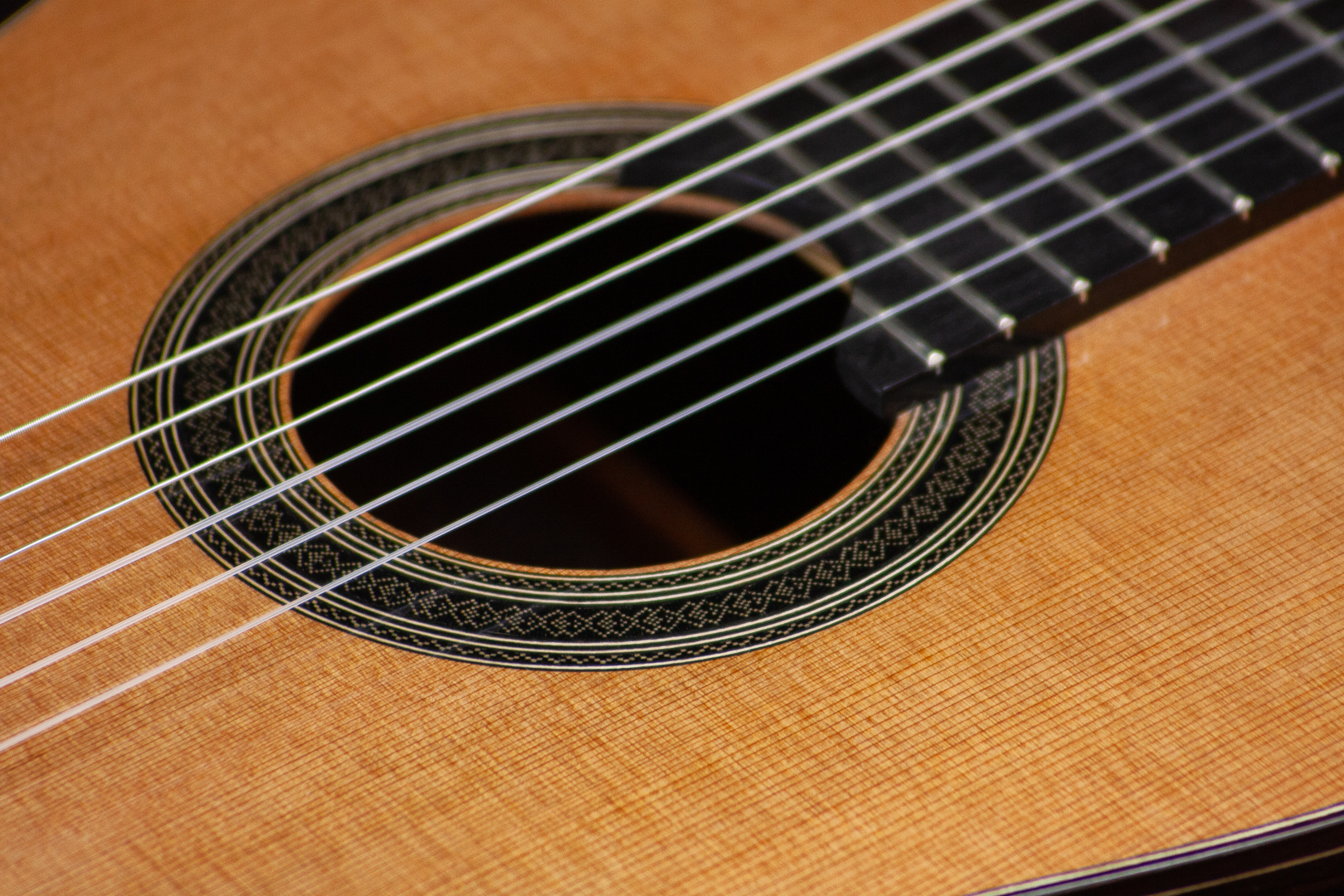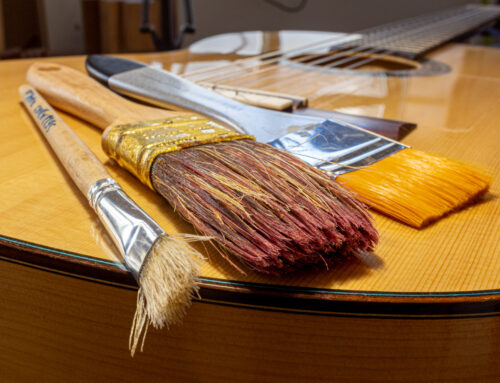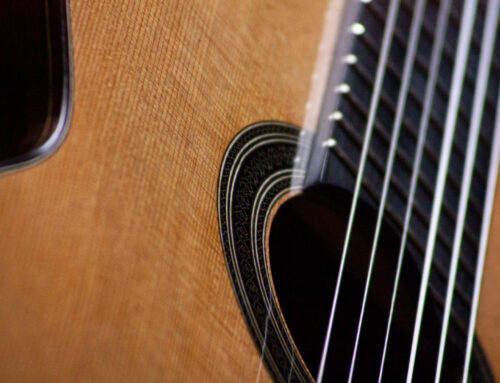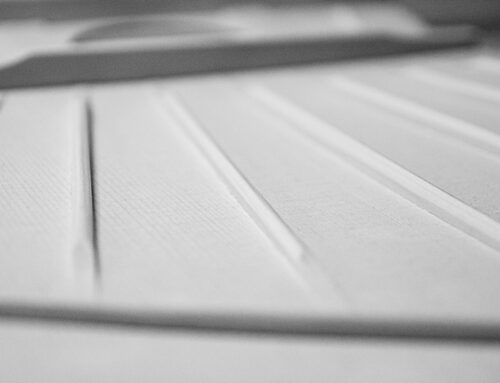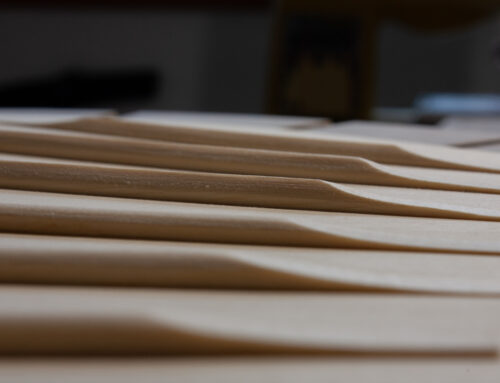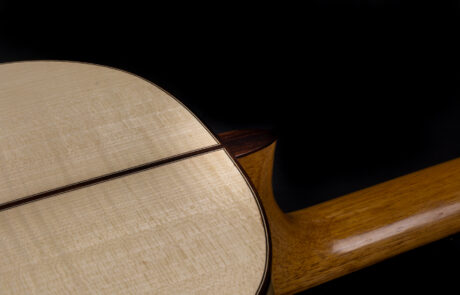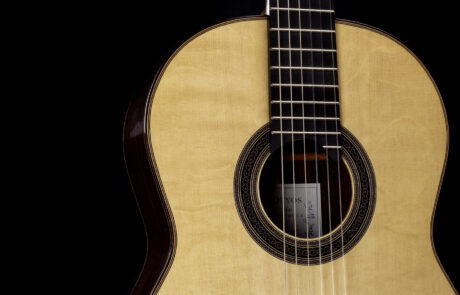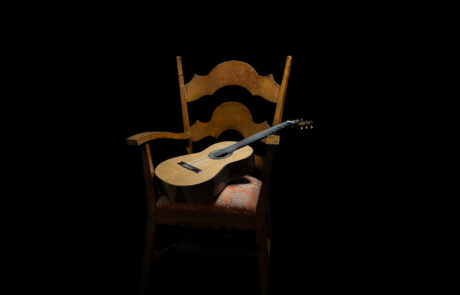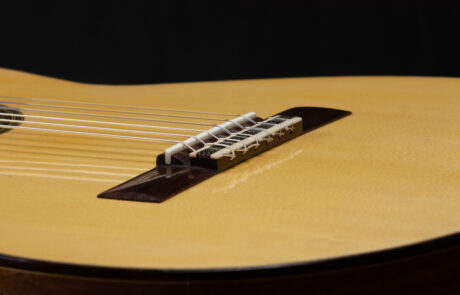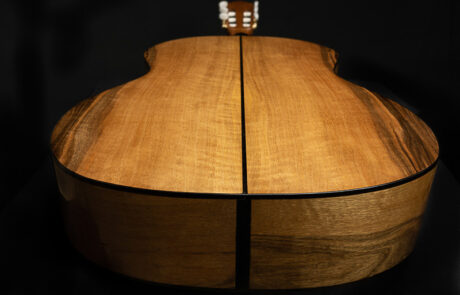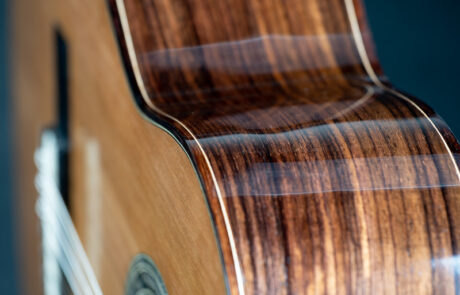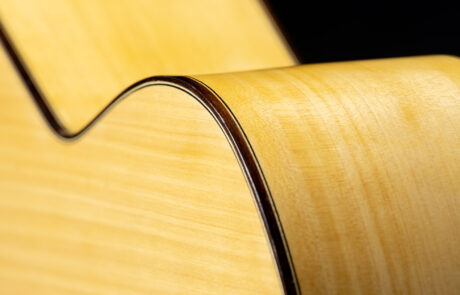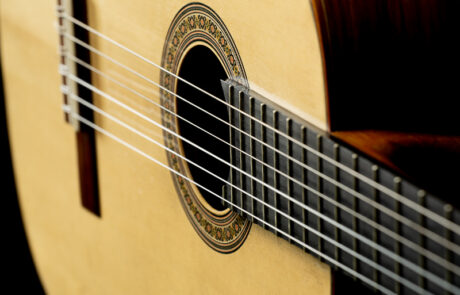Contents on this post
If you are thinking of buying a new guitar, it is interesting to choose whether the top will be cedar or spruce, and in general it is not superfluous to take a look at the possibilities that exist in terms of the woods with which it is built. In this post I will try to clarify some basic questions regarding the top wood, which as I explained in detail in this other post, are the ones that will most influence the sound of your instrument.
The influence of the soundboard on the sound
It is difficult to make an estimate, but just so we understand each other, I would say that 80 percent of the sound of your guitar is determined by the soundboard. The reason for this is that the soundboard is the most acoustically active part of a guitar. The strings are connected to the top through the bridge. And the vibrations that are transmitted to the top are amplified by the soundboard. In a very basic scheme, this is how a guitar works.
And since it is necessary for the top to vibrate, it is usually built with a soft wood, which is much easier to physically excite than a harder wood. Thus, a good guitar can be distinguished from a lesser quality guitar by its ability to respond to the player’s every action. A top that is sensitive to every impulse will a priori be a better top. But not only that, because in a well made top you play not only the character of the sound, but also a good part of the volume and dynamic range of the instrument. Somehow, the vibrations of the top have a certain membrane effect that “pumps” the sound waves, so that, the better it is built, the greater the dynamic range of the guitar will be, being easier to appreciate the difference between a pianissimo and a fortissimo, which is not negligible from an expressive point of view.
In short, the top is the heart of the sound of a guitar. In fact, this is true of any acoustic instrument with a soundboard: the tops of violins and pianos -just to mention two examples- work in a very similar way. The rest of the woods obviously influence the sound, but tend to contribute only slight nuances to its acoustic character.
Spruce tops: classic sound and acoustic coloring
Spruce has been the wood used since time immemorial for the construction of soundboards. It is also commonly referred to as spruce or spruce. There are many subspecies of spruce that can be used to build guitars, and the key is to know the scientific name of each one so as not to get lost. The most popular species for classical guitars is called Picea abies, by its scientific name, popularly known as European spruce, Norway spruce or Norway spruce.
If we look at its visual appearance, the color of spruce is a pale yellow, almost white, when the guitar is new. Over time, the spruce tends to darken to an almost amber yellow. This color variation is important to know in order to distinguish a new guitar from an old one. The great Antonio de Torres built all his guitars with spruce, and if we look at them today, we can appreciate that orangey yellow to which all woods of the Pinaceae family tend to turn with time.
Of course, this happens if the varnish used has not been stained, a circumstance in which we would have to make a study that exceeds the purpose of this entry. The most common way to finish handcrafted classical guitars is to use varnishes that do not add significant coloration, something that will also help you to distinguish a quality guitar from one that is not so good. Understand me: if a guitar maker uses a good wood to make a guitar, I don’t know what can move him not to show it as it is, but I imagine that this is very debatable. The common practice in luthier guitars is to use colorless varnishes. Although in this matter, as always, flamenco guitars are a bit of an exception, and it is not uncommon to find quality flamenco guitars varnished with red or orange tones that are not “natural”.
I think it is clear that I personally do not like it, but everyone has their own ideas in this regard. Not in vain, the varnish applied to the violins gives them that beautiful orange color, and in the violin world it is accepted that this should be so and that’s it.
But let’s go to the question of sound. Spruce is a wood that will bring you a bright sound all full of overtones. I would say that spruce, in terms of sound, has much more nuances than cedar, which we will talk about in a moment. I encourage you to listen to the same piece comparing cedar and spruce, and take the one you like best. It seems that for classical repertoire, spruce is a bit in a slump lately, but personally I associate it more to a matter of fashion than to a lack of quality, which is demonstrably not true.
Regarding spruce, there are two additional characteristics to take into account. The first is that it is a wood whose sound evolves with time. A new spruce guitar has a certain “dull” sound, as if it were missing something. It is with use and with the passage of time that spruce guitars “open up”, and all those harmonics and resonance that are so characteristic of spruce guitars appear. This is important to keep in mind when we buy a spruce guitar. If it is new, we have to imagine what the sound will be like after a few months of use. It is always for the better.
The other issue, which is somewhat related to the previous one, but that we have to take into account about spruce, is that it is a wood very sensitive to environmental changes, and we will notice how much its sound alters depending on whether we play in a drier or wetter climate, temperature, etc. It is said that the sound of spruce is acoustically less stable than cedar. These are not radical changes, and a spruce guitar will not sound bad because of a change of environment, but it is true that its sound is somewhat unpredictable: I leave it to each one to draw conclusions about whether this is good or bad.
Cedar tops: warm sound and stability
Red cedar (Thuja plicata, by its scientific name), also called Canadian cedar, began to be used for guitars in the middle of the 20th century. Until then, spruce was common. It is a light reddish-brown wood, with a slightly lower density than spruce. It is the species used to make pencils, with that characteristic smell that we have all experienced at one time or another when sharpening our crayons at school.
As I say, compared to spruce, cedar is a less dense wood, which gives a noticeably warmer sound to guitars. It has less harmonic richness than spruce, and we would say that the sound is more focused on the first harmonics of each note, with less presence of that bright tone and so “flamenco” that we find in the spruce. It is the wood in fashion among classical guitarists, especially since figures such as David Russell or Ana Vidovic adopted cedar for their lead guitars.
Unlike spruce, the sound of a cedar guitar evolves much less over time and is less sensitive to environmental changes. We would say that a new cedar guitar will already give us most of what it can give. This is obviously not a question of black and white, and they are guitars that also mature their sound with good use and many hours of vibration. Cedar is also the preference of many instrumentalists because its sound is always the same, with a certain independence of environmental changes.
Choosing a guitar is something similar to falling in love: it has a certain degree of irrationality, of something in a certain sense involuntary. There is also a very close relationship with the character we are looking for in our interpretations. Speaking of guitarists I have heard live, in my opinion, there are players like Anabel Montesinos or Leonella Alejandro, who have defined their character as performers thanks to the use of spruce: I can’t imagine Anabel’s sparkling and passionate air on a cedar guitar. And the same happens to Aniello Desiderio or Francisco Luís with cedar. In other words, there are no better or worse things. By the way, I don’t understand why Alí Arango continues to play with cedar, and I hope I’m not getting into trouble by saying this.
Now, just as it happens with love affairs in personal relationships, with guitars there can also be platonic love affairs, in which it is highly recommended to consider whether a particular guitar is going to facilitate or hinder your development as a guitarist. And that depends a lot on the repertoire -I think this above all-, the type of audiences for which you are going to use that guitar or if you are only going to use it for recordings, if you are going to subject it to a lot of travel or not, etc. I don’t want to get into trouble with this, but I do want to provide some general information that may be useful when ordering a guitar from a luthier.

